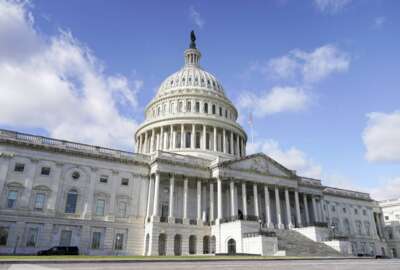Millions of American retirees — federal, military and Social Security beneficiaries— will be scanning the news Wednesday for an early clue to the size of their January cost-of-living adjustment (COLA). Whatever the number, folks will be waiting with bated breath.
With four months left to go in the countdown, it appears that the COLA could be in excess of 2 percent, based on the rise in living costs for the month of May. The exact amount of the January 2018 COLA for retirees won’t be known until mid-October. Retiree COLAs are based on the rise in living costs, as measured by the Bureau of Labor Statistics’ CPI-W Index-W. That stands for Consumer Price Index for Urban Wage Earners and Clerical Workers. It measures the nationwide rise (or fall) in prices for a market basket of goods. Many retirees believe it doesn’t reflect real costs to them because they spend a lot more for things like medical care, rather than refrigerators.
Although a 2-percent-plus COLA seems modest, it is actually huge compared to what retirees have gotten in the last few years. The January COLA (0.3 percent) was quickly eaten up by higher health insurance premiums. There was no COLA in 2016. Retirees got 1.7 percent in 2013 and 2015. The biggest increase in recent years (3.6 percent in January 2012 came after two years (2011 and 2010) when there was no COLA.
In the 1970s and early 1980s, when COLAs were on a different timetable, inflation-driven COLAs ranging from a “low” of 5.9 percent in July 1977 to 14.3 percent in 1980, and 11.2 percent in July 1981.
Social Security recipients, one of the largest and fastest-growing segments of the U.S. population, get full COLAs each January based on the rise in living costs from the third quarter of the current year (July, August, September) over the CPI-W level for the previous years’ third quarter. Feds retired under the older Civil Service Retirement System get the full COLA amount too, as do persons getting military retired pay.
But the majority of current federal workers are under the newer Federal Employees Retirement System (FERS). FERS was created in part to make retirement benefits more mobile for the vast majority of federal and postal employees who do not work long enough to get federal retirement benefits. FERS employees pay into Social Security, get a reduced government annuity or pension and have a 401k plan (the Thrift Savings Plan). TSP benefits are on par with large private sector employers. COLAs for FERS retirees don’t kick in until age 62, and they get so-called diet COLAs on amounts over 2 percent.
The Trump administration is asking Congress to trim future COLAs for CSRS retirees by 0.5 percent each year and to eliminate them completely for current and future FERS retirees. Under the FERS plan, employees would pay more for their benefits while losing 100 percent of their inflation protection once retired.
Some people argue that cutting these retirement programs as proposed by the White House could cripple recruiting, or create a civil service of seniors who are afraid to retire. Ever. Individuals who would be affected by these cuts argue that it breaks an implicit promise made when entering the civil service.
Nearly Useless Factoid
By Jory Heckman
In 1956, the Atomic Energy Commission conducted a study to determine whether beer in proximity to a nuclear blast would still be drinkable. After exploding two bombs (and actual taste tests), scientists found that the beers “could be used as potable water sources for immediate emergency purposes.”
Source: NPR
Copyright
© 2024 Federal News Network. All rights reserved. This website is not intended for users located within the European Economic Area.





